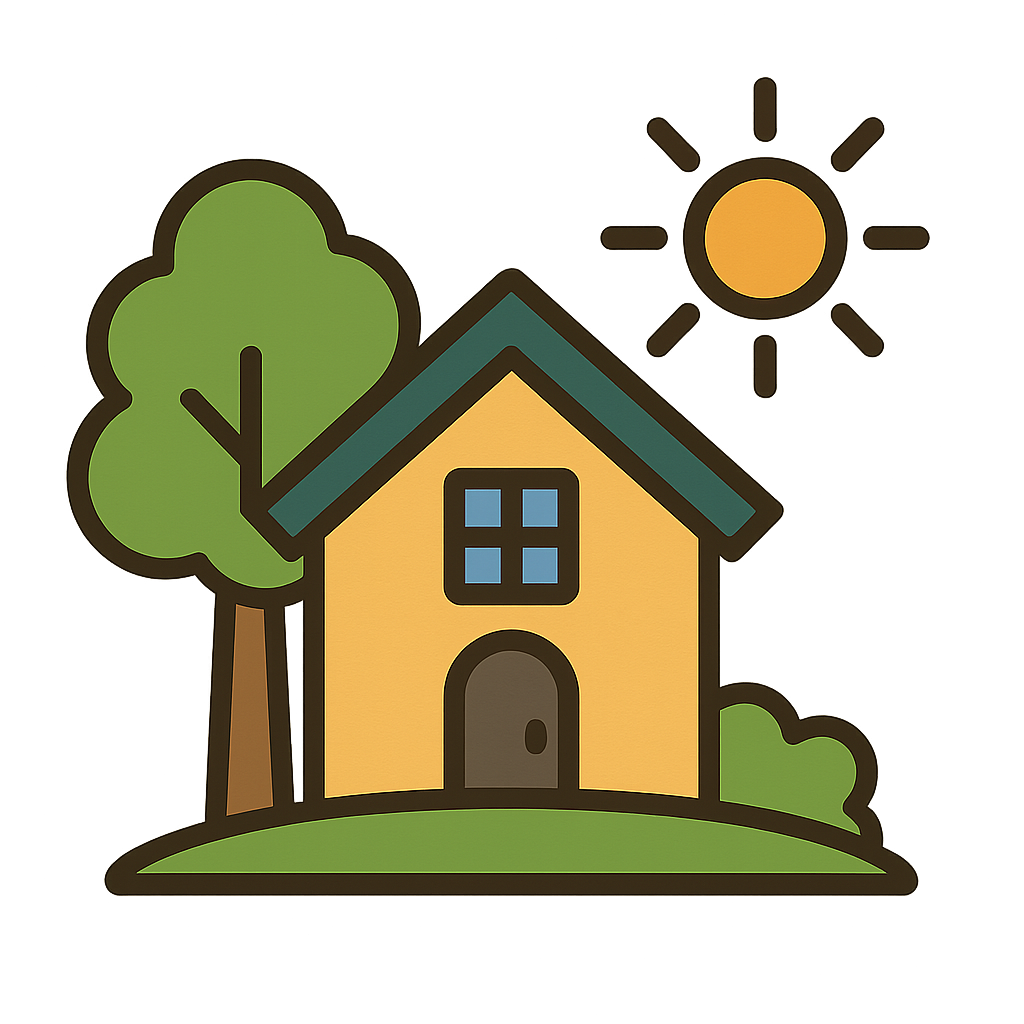I Am a Habitat
For a jaguar, I am the damp, fragrant floor of a rainforest, where shadows dapple the ground and the scent of orchids hangs heavy in the humid air. My broad leaves provide the perfect cover for a silent stalk. For a clownfish, I am the sun-warmed, salty water of a coral reef, a bustling city of anemones whose stinging tentacles offer a safe and brilliant home. For a polar bear, I am the vast, cold ice of the Arctic, a sprawling platform of white and blue where the crisp air carries the scent of seals miles away. And for you, I might be a bustling city apartment with windows overlooking a river, a quiet suburban house with a leafy backyard, or a farmhouse surrounded by fields of wheat. Have you ever been somewhere that felt just right, a place where you had everything you needed to thrive? A place that felt like it was made just for you? That is what I am. I am a Habitat.
For centuries, humans lived within me, but they didn't always understand my true nature. They saw the parts, but not the whole. Early observers and naturalists were clever, though. They noticed that certain orchids only grew on certain trees, and that specific birds always nested near particular rivers. They were seeing my patterns. Then, around the year 1800, a truly remarkable explorer named Alexander von Humboldt journeyed through the Americas. He didn't just collect plants; he climbed mountains, measured the temperature of ocean currents, and mapped rivers. He was the first to see that I was not just a collection of separate pieces but a giant, interconnected web. He realized that the height of a mountain influenced the climate, which determined the types of plants that could grow, which in turn provided food and shelter for specific animals. He saw the beautiful, intricate tapestry that I am. Decades later, in 1866, a scientist named Ernst Haeckel gave the study of my homes a formal name: 'ecology.' From the Greek words for 'home' and 'study,' ecology was the science of understanding me. It helped people see me not just as a location, but as a dynamic system of relationships. It revealed how every living thing within me depends on everything else—and on the non-living things, too—for the essential ingredients of life: food, water, shelter, and space.
This new understanding brought with it a profound sense of responsibility. As human technology grew more powerful, people began to realize that their actions could unravel the delicate threads of my web. A pivotal moment came in 1962 with the publication of a book called 'Silent Spring' by a brave biologist named Rachel Carson. Her work was a powerful wake-up call, revealing how pesticides used on farms were harming birds and other wildlife, threatening to create a spring where no birds sang. Her book didn't spread fear; it sparked a movement of care and stewardship. People began to talk about 'biodiversity'—the incredible variety of life I support. They understood that this variety isn't just beautiful; it makes me stronger and more resilient, like a well-built fortress. This led to the creation of magnificent national parks, protected areas, and global conservation efforts. Humans were no longer just residents within me; they were becoming my dedicated guardians, working to repair my connections and preserve my wonders for the future.
Your own story is woven into my fabric, too. The place you live, whether it’s a city tower or a country lane, is your habitat, and it is connected to all the others. The choices you make every day can either strengthen my web or weaken it. I invite you to be a curious explorer like Humboldt and a careful observer like Carson. Look closely at the park in your neighborhood, the tree outside your window, or the patch of weeds growing in the pavement. Who lives there? What do they need to survive? By learning about, respecting, and caring for your own small piece of me, you are caring for every living thing on the planet. You are ensuring that for generations to come, there will always be a safe and wonderful home for everyone.
Reading Comprehension Questions
Click to see answer
